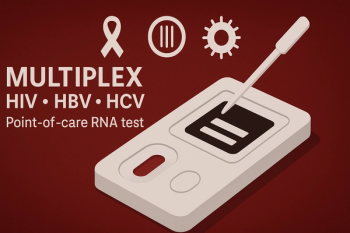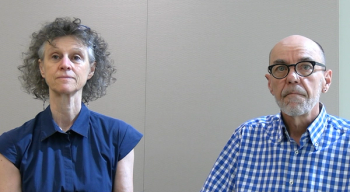
Active Sex Lives, Lack of Awareness, and Diagnostic and Treatment Issues Causing Spike in STD Infections in the Elderly
As adults are living longer, they are able to continue to have healthy sex lives. Unfortunately, many are not practicing safe sex, and healthcare practitioners are not screening their older patients for sexually transmitted diseases (STDs).
Most people assume that concerns about sexually transmitted diseases (STDs) are largely for the young. Unfortunately, that inaccurate assumption appears to be leading to a “perfect storm” in a surprising population that is experiencing increasing rates of STD diagnoses in recent years: the “elderly,” as defined by the general population over 50 years of age.
According to a recent
According to Cynthia Figueroa, PhD, ARNP, ANP-BC, clinical professor and lead author on the article, “A lack of awareness on the part of both patients and nurses on clinical signs and symptoms of STDs contributes to missed cues by nurses in both general and advanced practice.”
The team suggested that their research could indicate nurses’ misconceptions about older patients’ desire to talk about their sex lives (nurses believe they do not wish to do so, while patients say that they do wish to discuss this aspect of their health but are hesitant or embarrassed to do so) contributes to low screening for and education about STDs, and often STD symptoms are mistaken for health issues common to older populations, such as confusion, weight loss, and fatigue.
Furthermore, the issue is becoming more widespread as sexual activity becomes increasingly common and accessible to older individuals. Medical trends are enabling more men to engage more actively and enjoyably in sex throughout their older years, and men and women are seeking new partners later in life as the rates of mid-life divorce rise. To complicate things further, many members of this population are operating without the basic “safe sex education” that most younger nurses take for granted in their patients’ frame of reference since the curriculum was not prevalent until the 1980s, after HIV/AIDS was discovered. Older women (50 years and up) also tend to be less determined to use protection due to being postmenopausal and therefore unconcerned with possible pregnancy.
The study consisted of two parts. First the team conducted a multiple-choice survey of Bachelor of Science in Nursing degree students (BSN) to assess the student baseline knowledge on older adult sexuality and STDs. The results of the survey and student demographic data were assessed together with the goal of exploring any relationships that might lead to stronger performance based on gender, age, or clinical experience level. However, in the end, results indicated, “both nurses and older adults fail to grasp the impact of their perceptions of susceptibility, severity and consequences,” the team said. They added, “Both patients and nurses need a better understanding of the benefits…[of] safe sexual practices [for adults] and…unbiased and comprehensive screening and education.”
Second, the team conducted a review of the available literature on the topic of older adult sexuality in order to assess tools that have been used in evaluating the perceptions of sexuality in older adults. These tools are: Sexual Attitudes and Beliefs (SABS) and Aging Sexual Knowledge and Attitudes Scale (ASKAS). “Repeated studies showed the strong assessment validity of these tools,” said Figueroa and her co-author, adding that younger nurses needed “some amount of training and education” in addition to those tools in order to effectively use them since younger individuals tend to feel that discussing sexuality with older adults was “less acceptable and less appropriate.”
The team concluded that although the subject group was small and had a small enough male population that no gender relationship could be reliably established with scores, it is safe to say that nursing students did not perform well on older adult sexuality, demographic, or STD questions regardless of experience. They noted that the participants were too uniform of age (all 20 to 25 years of age) to reliably asses age-related correlations, but emphasized that the BSN curriculum is in need of improvement regarding older adult sexuality. “To that end, a program for nursing students of didactic and practical exercises to improve their knowledge and comfort will help them improve patient screening and education abilities,” they said.
Newsletter
Stay ahead of emerging infectious disease threats with expert insights and breaking research. Subscribe now to get updates delivered straight to your inbox.















































































































































































































































































































